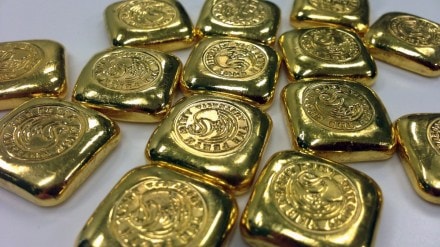Buying gold every Dhanteras —an annual gold systematic investment plan or SIP—is a disciplined approach to address asset allocation needs and create long-term wealth. Such an annual exercise helps averaging the price volatility and aligning cultural investment objectives.
If an individual had purchased just 10 grams of gold every Dhanteras since 2020, the current value would be Rs 6,33,250 on investments of Rs 2,86,730, a growth of 2.2 times.
In a longer time period, had an investor purchased gold worth Rs 1 lakh every Dhanteras since 2005, the corpus now would be Rs 1.08 crore (950 grams of gold) on an investment value of Rs 20 lakh.
Chirag Mehta, chief investment officer, Quantum AMC, says this steady, ritual-based investing is one of India’s most underrated financial traditions. “A culture SIP that binds faith, discipline and financial foresight,” he says.
Rising prices
Throughout this year the metal has dazzled the markets, recording 39 new all-time highs. Between November 1, 2022 and October 17, 2025, gold prices in the domestic market rose 158% from Rs 50,441 to Rs 1,30,233 per 10 grams.
With rising global uncertainty, this period saw record purchases of the yellow metal by central banks led by China, India and Turkey, underlining a gradual diversification away from the US dollar. In fact, gold has reclaimed the highest share of global central bank reserves for the first time since 1996.
Gold purchases
While jewellery and coins account for a significant share of gold sales during Dhanteras and Diwali, alternatives such as gold exchange traded funds (ETF) and digital gold funds are gaining popularity. “For investors seeking portfolio diversification, inflation protection and tax-efficient exposure to gold, ETFs remain a compelling option,” says Ashwini Kumar, senior vice-president and head, Market Data, ICRA Analytics.
Liquidity, transparency, cost-effectiveness and ease of trading make ETFs popular. “Investors should consider gold ETFs as they have a much better support than silver,“ says Karan Aggarwal, co-founder & CIO, Elever, a quant based PMS.
With changing times, millennials and Gen Z tend to view gold more as a financial instrument than a social symbol. They are increasingly open to digital forms like ETFs, SGBs, and digital gold, attracted by convenience, transparency, and the ability to invest in small amounts.
Ross Maxwell, global strategy lead at VT Markets, says their purchases of physical gold lean toward lightweight, and versatile designs rather than heavy traditional jewellery. “While younger buyers may not share the same emotional attachment as their parents, they still honour traditions by making small symbolic purchases during festivals,” he says.
Physical gold provides a tangible asset as it can be seen, worn, and passed down through generations as an heirloom. However, there are associated costs such as making and hallmarking charges.
Buyers should be aware of fake hallmarks and hidden charges. When selling gold, the jeweller will deduct making charges which will lower the value of gold.
As gold prices rise, there is a shift in buying pattern: opting for lighter, lower-karat design balancing tradition with affordability. And opting for small units of gold ETFs and digital gold, allowing buying without heavy upfront outlays.
Gradually building gold holdings —one Dhanteras at a time —remains one of the most stable and symbolic investment strategies.
